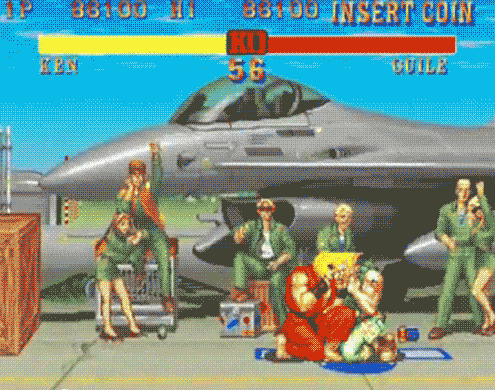6 Lessons From Phil Daru
One of the cool stories behind my trip down to visit Phil came about from a video I did on Westside Barbell. Phil commented on the video because we used some of his footage. Phil uses a condensed conjugate method of training. Phil is one of the best in the entire world at using some principles from Westside Barbell.

Phil reached out and got us thinking about doing something. A couple of months passed and we then did the landmine video. Phil reached out again saying, “Let’s get together and do some things and film.”
We at Garage Strength, Jason and me, decided to wake up at 3:30 AM, drive to Newark airport, take a flight to Fort Lauderdale, spend the entire day in Fort Lauderdale, and then fly back in the exact same day. It was harder than I thought it would be but it got done.
That has led to me having grey hairs in my beard. Which is one thing I learned from Phil Daru, every badass strength coach has to have a big beard. Going into the experience, I didn’t know what to expect but I hoped it would be mindblowing and also reaffirming as a strength coach, business owner, and people trying to change the world of fitness.
My main purpose in going into this situation with Phil Daru was to learn from him. We come from different aspects. Phil comes more from a powerlifting background and I come from a weightlifting background. Regardless, I wanted to learn from the best to figure out where I had holes in my own system. That’s where Phil Daru, the best strength and conditioning coach in MMA, comes in.
1. Complex Warm-Up
I learned from Phil that warming up with complexity is GOOD. Oftentimes with my athletes, I just have them roll out a bit, do some walking lunges, and perform a few overhead squats to be good to go. That is fine if they are in a specific sport like throwing. However, what I learned from Phil when training like Dustin Poirier is that Phil gave me a very complex warm-up.
The complex warm-up Phil gave me made me struggle. Through struggling and trying to properly coordinate, I became more focused on the actual task. During the workout, I felt more in tune with my body, leading to better energy and recruitment, all because of the complex warm-up.
Some of the movements during the warm-up were very simple. Heel walks and toe walks to wake up proprioception in the feet. Then the movement got more and more complicated which led to greater performance later on.
Strength coaches sometimes forget that a complex warm-up leads to greater performance and greater focus.

2. Sequence of training
Phil’s sequence of training is boom, boom, boom, boom! It included a warm-up, followed by some explosive work, then I did some standard strength work, and finished off with endurance work. It was a pre-derived sequence that ended up leading to a well throughout training session that had me, the athlete, focused the entire time.
Sequential training sessions need to be seen as a ritual. Coaches need to hammer athletes to hold them through the sequence. Every single training session is a repeated ritual of the previous day and the previous week and all the previous work. It helps athletes become more focused.
I have implemented a direct sequence of training with a lot of my football guys and wrestlers. I am seeing more return by the athletes being more focused in training, not looking at their phones, and putting out more effort.

3. Volume Is Awesome, But…
One of my biggest downfalls as a coach is that I get FOMO. I am a high-volume person. My elite throwers and elite weightlifters train 9 sessions a week. Sometimes they might even do more than that. At the very least, my elite athletes are training four to five days a week.
A thing I learned directly from Phil when dealing with MMA fighters, or in my case, we have a lot of freestyle wrestlers, combat sports that are physically and mentally challenging, it is okay to train the athletes three days a week. The athletes are doing so much technical work in their sport that those three days in the weight room if laid out properly, athletes will still be able to adapt very well. The stimulus to provide the adaptation in the sport will occur.
Three to four days may be enough to allow athletes to adapt as well as compete better on the competitive stage.
4. Setting Up The Program For A Single Day
Oftentimes for us at Garage Strength, we will do a lower body day, an upper body day, and then a plyometric day. That is sort of how we lay out the training day-to-day. When I trained with Phil, he had me do that complex warm-up, some serious upper bodywork with heavy floor presses, then I did some rows while doing some posterior chain work, and then that led into some endurance work.
The workout of having an upper-body and lower-body work working together showed me that it is okay to do that. I prefer to split that up, but when Phil and I started talking about it I had a lightbulb turn on in my brain. See, when only having three days or less with the athlete, and because they are so focused on their specific sport, strength coaches have to combine the movements and be creative with how the program is laid out.
Strength coaches have to be creative. We don’t always have to exist in our own personal confines. We can take somebody else’s schedule, and if we are good at our job, we can rearrange that schedule to still be successful. That might mean doing upper-body and lower-body on the same day.
We can alter a training system based on the individual’s scheduling issues. Basically, it is okay to train the entire body in one day. This is something that really opened me up to be more progressive towards and to start to utilize at Garage Strength.

5. Varying Intervals Are Key To Endurance
I knew this but needed a prod. Phil gave me that prod.
If you watch the video of me doing the interval training for the endurance session, which I almost puked, he had me do 10 seconds as hard as possible on the bike with an active rest period for 50 seconds. I was supposed to do five sets but acted like a baby and only did three. The big difference I saw is that by going as hard as possible and then back down, the body is dealing with a lot of different issues, cycling through the CO2 to prevent the lactic acid build-up to teach the body what to do. My body did not do well. In that case, it showcased to me the importance of varying intervals and putting them into training.
So instead of classic interval training, we can do 10 seconds as hard as possible with 50 seconds of active rest or 25 seconds as hard as possible and then rest for a minute. Interval training does not only have a place for endurance performance but also has a place for recovery.

6. Power Endurance
Recap
Flying home and driving home after a literal 24 hour day was exhausting. But as I was driving home I reflected on the things I learned from Phil Daru regarding business, training, and how he operates. The learning experience was great. It opened my mind even further.
Thank you, Phil. Let’s continue to improve the world of sports and performance training so we can help everyone out there to learn.
DANE MILLER
Dane Miller is the owner and founder of Garage Strength Sports Performance. He works with a select handful of clients on building comprehensive programs for fitness and nutrition. Several times a year he leads a workshop for coaches, trainers, and fitness enthusiasts.


